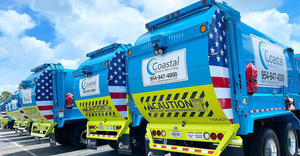Veolia North America Upgrades Richmond, Calif. Wastewater Treatment Plant
Environmental solutions services provider Veolia North America announced that it completed $40 million in upgrades to the Richmond Water Pollution Control plant. The project, which took three years to complete, improves treatment processes, environmental compliance, and odor control for the city of Richmond and surrounding communities in the San Francisco Bay.

Environmental solutions services provider Veolia North America announced that it completed $40 million in upgrades to the Richmond Water Pollution Control plant.
The project, which took three years to complete, improves treatment processes, environmental compliance, and odor control for the city of Richmond, Calif. and surrounding communities in the San Francisco Bay.
“These vital improvements will make a significant impact in how the wastewater treatment plant functions in the community, by improving the quality of treated water released into San Francisco Bay, delivering more efficient operations to the city, and better controlling the odors produced by the wastewater treatment process," commented Karine Rougé, CEO for Municipal Water at Veolia North America.
The company has been in charge of operating the wastewater plant since 2002. The city stands to benefit from both an environmental and financial aspect with the addition of new equipment that will reduce energy costs and require lower levels of chemical treatment to operate, including:
Fine screens – Two new mechanical fine screens were installed to filter out trash, rags and other larger debris from the wastewater stream. This prevents that material from clogging pipes and pumps, and potentially polluting the San Francisco Bay.
Vortex grit removal system – Grit and sand settles at the bottom of wastewater treatment tanks, where it can cause wear and tear on machinery. The new grit removal system allows those fine materials to be easily separated from wastewater.
Biofilter – Gases released by the wastewater treatment process are captured and forced through a new filtration system. Many layers of porous materials in the biofilter promote the growth of specialized microorganisms that break down the odor-causing compounds.
Blower building – a new structure holds powerful mechanical turbo blowers, which ingest outside air that is diffused into wastewater to promote the treatment process.
Aeration basins – a new system in the bottom of wastewater treatment tanks diffuses air into the water as fine bubbles, rather than the previous mechanical mixing system. These fine bubble diffusers are more consistent, efficient and resilient than the prior system.
Source: Veolia North America
Read more about:
NewsAbout the Author
You May Also Like


